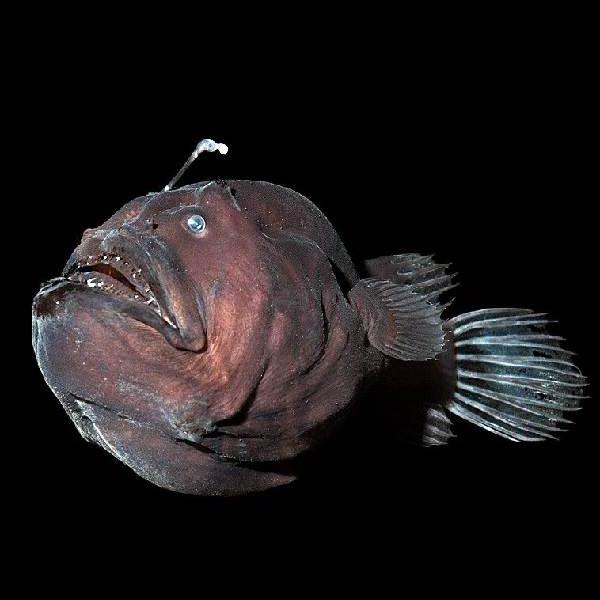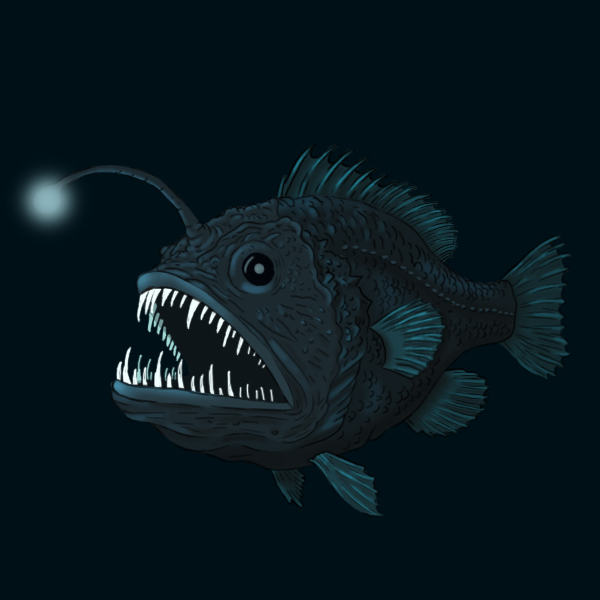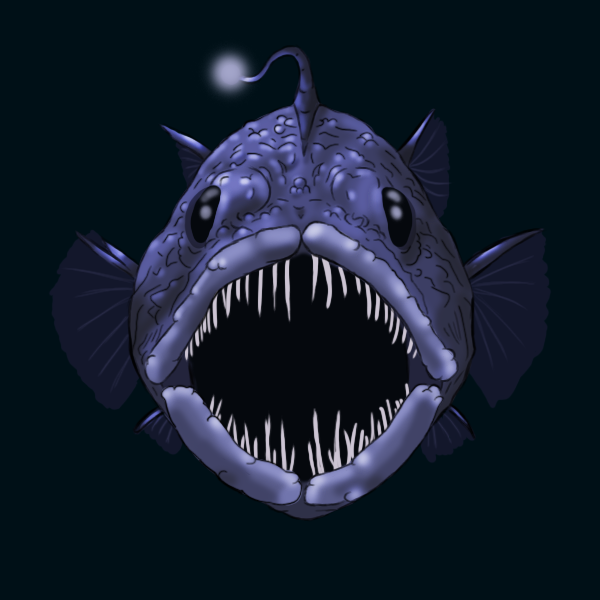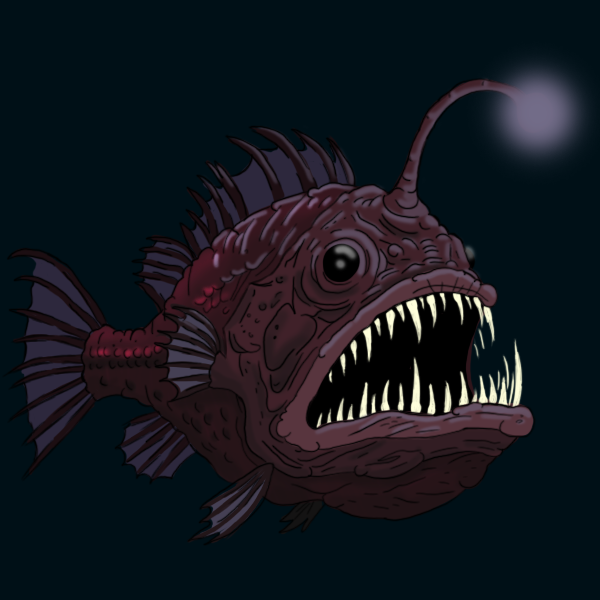The Black Sea Devil is a creature that perfectly embodies the mysteries and horror of the ocean depths. This fish, officially known as Melanocetus johnsonii, is one of the most recognizable representatives of deep-sea fish, mainly due to its unusual appearance.
The manta ray is a typical representative of the angler fish (Lophiiformes), characterized by a streamlined, almost spherical body and a huge, wide mouth full of sharp, dagger-like teeth. But what makes it truly iconic is its bioluminescent organ – a modified dorsal fin that acts like a fishing rod. At the end of this “rod” is a small, glowing ball, called an esca. This light is produced by symbiotic bacteria and serves as a lure to attract prey in the dark, lightless depths where no sunlight can reach.
Melanocetus johnsonii inhabits the bathyal and abyssal zones of the oceans, at depths ranging from several hundred to several thousand meters. In these extreme conditions, where the pressure is crushing and the temperature is close to freezing, food is extremely valuable. The manta ray is an ambush predator. Its luminous lure lures small fish and invertebrates right into the reach of its mouth. Thanks to its stretchy stomach, it can swallow prey much larger than itself, a key adaptation in an environment where meals are rare.
One of the most fascinating aspects of the life of the manta ray is its unique way of reproduction. Males are much smaller than females and do not possess a luminous organ of their own. In order to survive and ensure the continuation of the species, the tiny male attaches himself to the female's body and eventually fuses with her. His circulatory system merges with hers, and the male becomes a kind of "parasite," providing the female with sperm in exchange for nutrients. This extreme dedication ensures that the female always has access to a mate to breed in the vast and empty depths.








